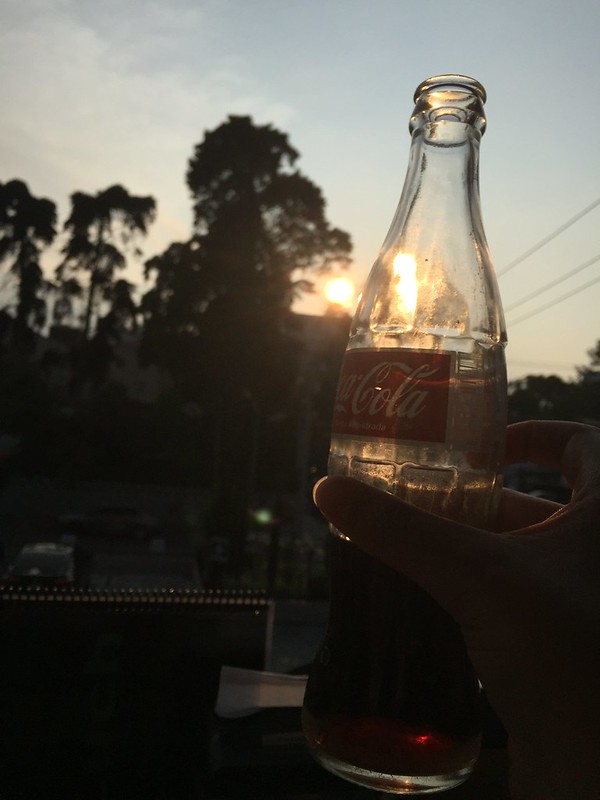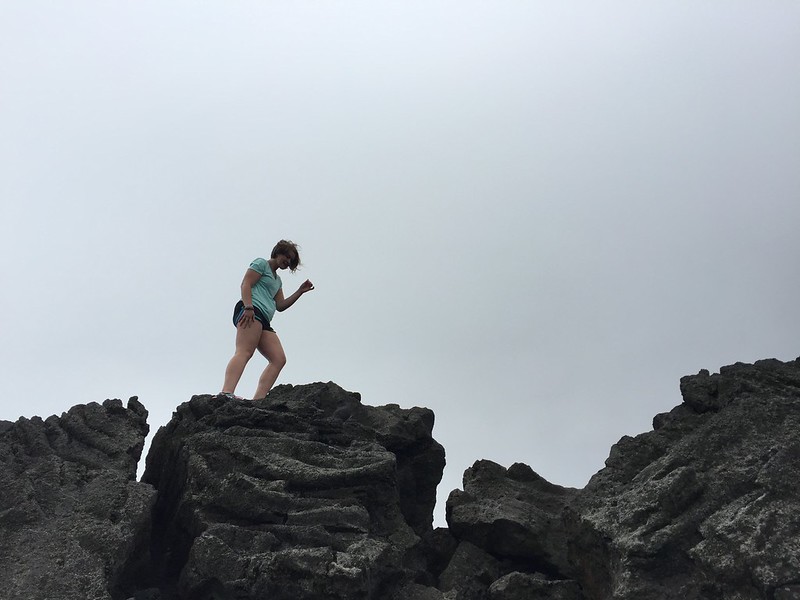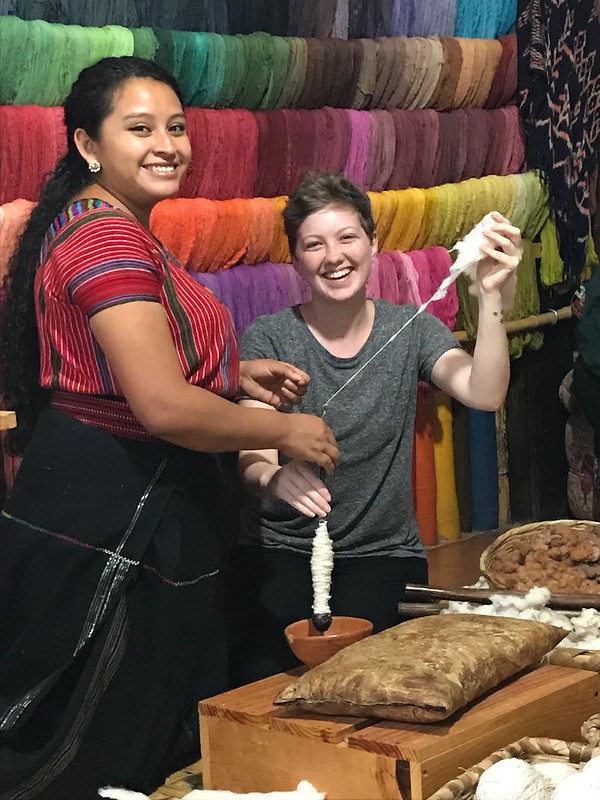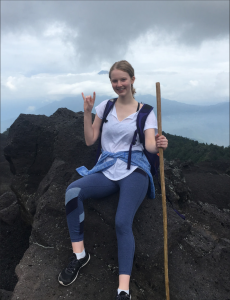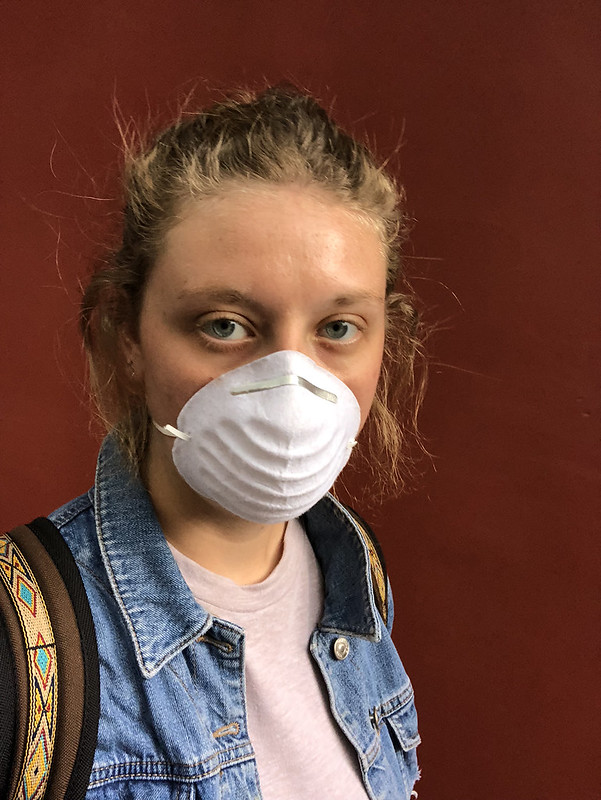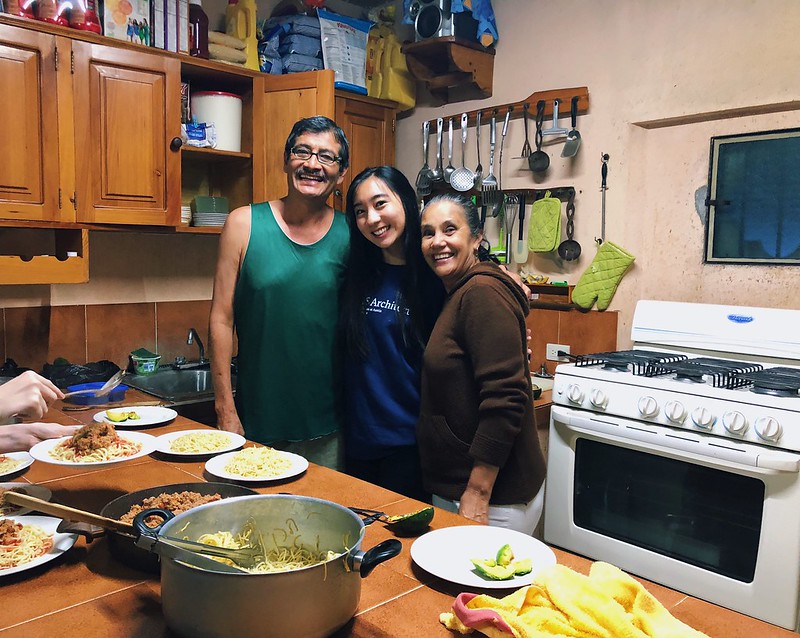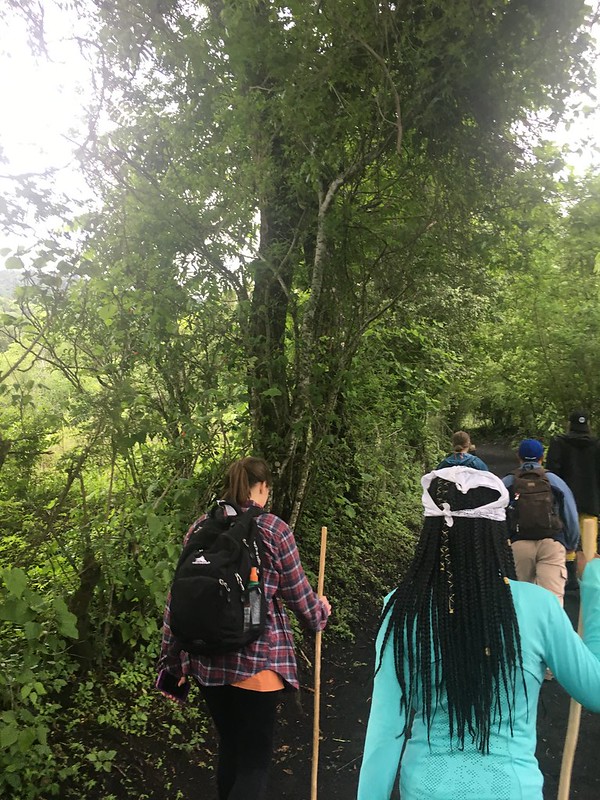Hola, hola! So, I guess to begin, I should introduce myself. I’ll keep it brief! My name’s Andres M. Garza, I was born and raised in Mexico, and I’m a senior anthropology student at the University of Texas. Currently, I’m in Guatemala doing a study abroad program over Maya art – but within the time I’m here with school, I’m also given a bit of leeway to explore and learn about subjects that interest me. As many people do, I love coffee. I think I know a little bit about coffee, or at least that’s what I thought. The one thing I did know is that Guatemala is responsible for some of the world’s most delicious coffee and that I had to try some. By some, I mean a lot.
I signed up for a coffee tasting workshop with a few of the friends I’ve made here. We took a quick shuttle few minutes out of the city of Antigua and arrived at this tiny little office in San Miguel Escobar. We were met by a super friendly and enthusiastic volunteer, Jonathan. He showed us the room he laid out with three different sets of coffee beans he self-roasted the day before. Roasting beans is extremely difficult to do on a small scale and requires expensive equipment and a lot of time. So, that was neat!
Now, I feel I can’t continue without mentioning this: as we walked into the office, we heard what sounded like raindrops falling on the thin-metal roof. Stuck my hand out into the open area of the building (most buildings are a blend of indoor and outdoor). No water wet my arm. After a few seconds we realized it was ash. Volcanic ash. Tiny little rocks fell, and continued to fall throughout our tasting. To clarify, the area we were at ended up being okay. The city was primarily covered with ash, but no casualties here.
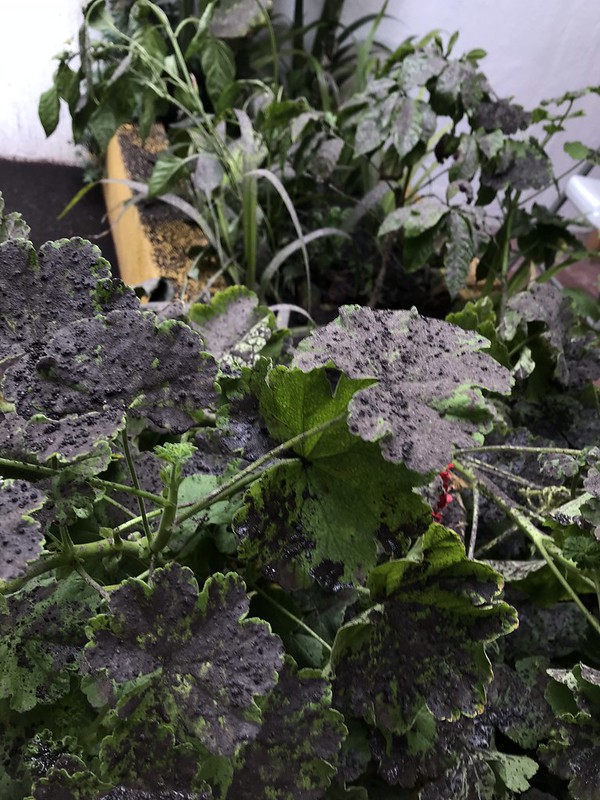
Volcanic ash, Jonathan informed us, is part of what makes the soil in Guatemala so fertile and great for growing coffee. Though, not when it is in large quantities or as destructive as this eruption was. He began by giving us a sheet to circle and rank each different kind of coffee. Also, he explained to us the difference between Arabica coffee and Robusta. Arabica are high-quality beans grown specifically in the highlands. They are grown in an artisanal way, at an altitude over 600m, though he said that the higher they’re grown, the better they’ll taste. Robusta, well, they are what Arabica are not. And they are cheaper.

The beans were ground and we sampled them in small cups. We began by smelling each batch, describing their aroma. Jonathan gave us a list of descriptive words as we are “beginner” tasters and he was right that our vocabulary is not on par with professionals.

Following that, we slowly poured water from a kettle onto the ground beans to let them bloom. Blooming the beans, as Jonathan described, allows their aroma to strengthen, and we let that sit for some time. It really did look like it was alive, the water breathing and its body awake.
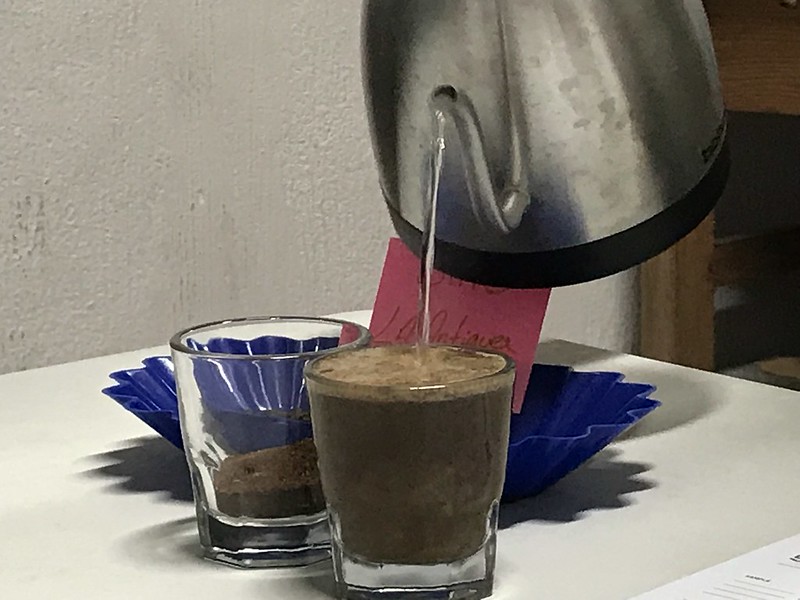
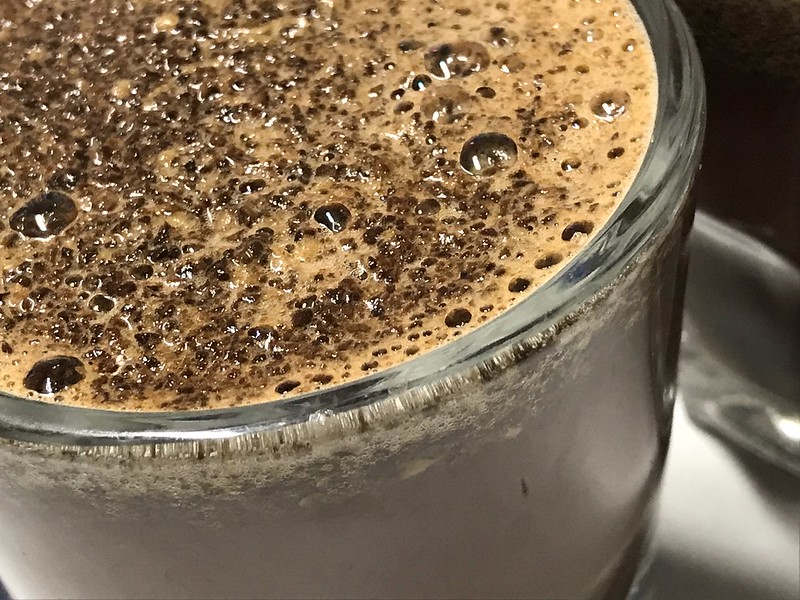
Apparently, professionals slurp their coffee. Each cup has its own spoon and there is a little washing cup with clean, hot water. This is to not cross-contaminate flavors. Slurping allows the flavors to be more present on one’s tongue, and I could see why they do that. We ranked their flavor profiles, notes, mouth-feel, and after-taste for each and scored them according to the chart he gave us. I did… pretty bad.
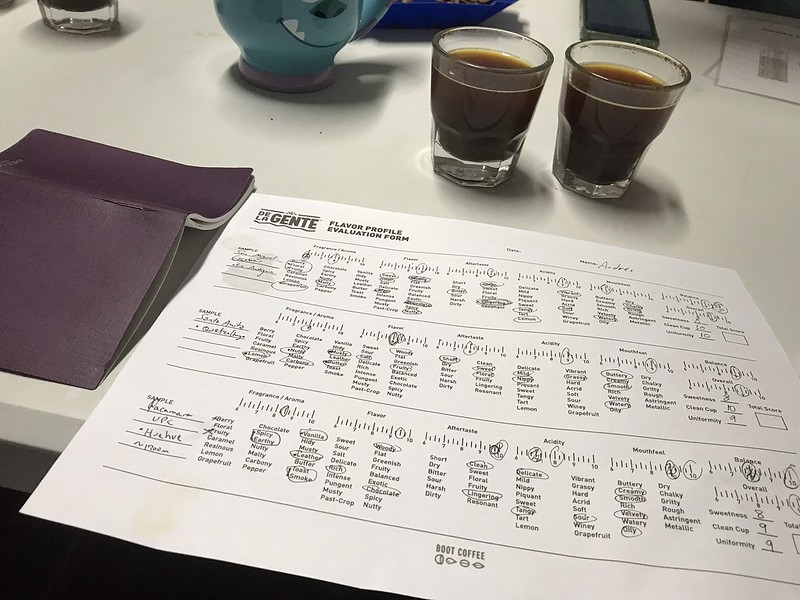
After that, Jonathan showed us a variety of brewing methods and allowed us to choose three to try. We were already feeling the caffeine at that point. He pulled out the Chemex, his personal favorite brewing method. It’s a slow-pour with 10 second intervals after certain quantities of water.

The taste was quite light, floral, and felt very spring-like. Each method was very precise, having us measure the amount of water and coffee, checking the temperature of the water, and timing each act of the process. To contrast this, he pulled out a French Press. This method is probably more recognizable to most of the American audience. The beans were significantly coarser so they wouldn’t must the coffee. The taste was heavier and darker — what one would think would be good for a gloomy winter morning.
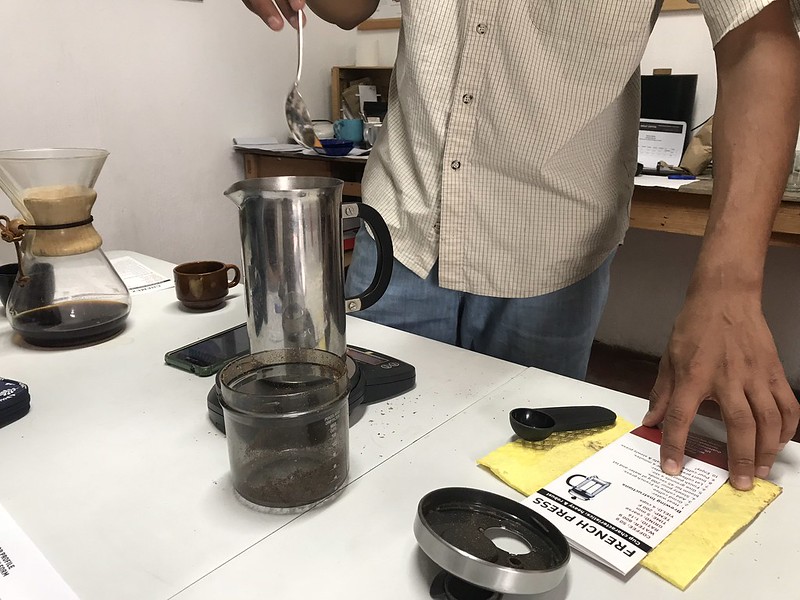
Finally, the last method was an Aeropress. I personally hadn’t tried it before, but it was a method that brewed a single cup rather than a large amount like the rest. It was compact, strong, yet much smoother than the French Press because the beans were ground the finest possible. I wasn’t able to get any pictures of those since I was the one doing the process. But at that point, my friends kept passing me their leftover coffee and since my caffeine tolerance is high, I thought I could handle it. It was too much, and I was jittery.
We left soon after. Jonathan was so genuine in speaking about the organization De La Gente. It is an NGO that helps the farmers of Guatemala sell directly to consumer or to cafés rather than the process of selling to big buyers where their profits are fractioned. One thing he mentioned was that the farmers themselves had never tasted the extent of the quality of what they were producing, unable to self-roast the beans and unable to afford adequate brewing equipment. A goal of his is to get them to realize how beautiful the product they are growing is, while helping them financially and informing an audience about the process. I can’t thank him enough.
It was great!


